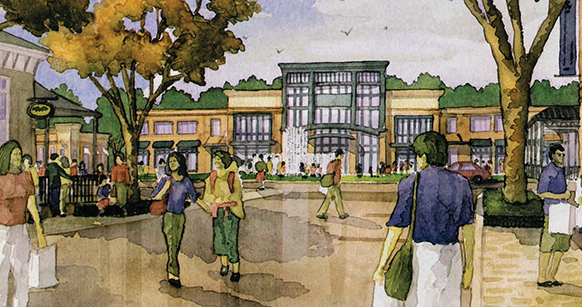
Grandview Yard Project Another Bright Spot for Columbus
July 30th, 2008
Dan Rafter, Midwest Real Estate News
Michael DiPerna, managing director of Baird Structured Finance Group, said that the former warehouse site just outside Columbus, Ohio, was always an obvious choice for a large-scale mixed-use development.
In 2009, that development will begin to take shape. The site, located near Ohio State University in the city of Grandview Heights, formerly housed more than 1 million square feet of warehouse space owned by Big Bear supermarkets. Unfortunately for Big Bear, its parent company, Penn Traffic Company, declared bankruptcy in 2003. The sprawling warehouse, then, sat empty.
But that will change next year, when construction will begin on Grandview Yard, a $500 million master-planned development by Columbus’ own Nationwide Realty Investors. The project will include significant residential, office and retail space. “Nationwide saw a great opportunity in a great location,” said DiPerna. “The location is very close to downtown Columbus. It’s a large area. Grandview Height has one of the higher income averages in the area. It all makes sense for a development of this nature.”
When complete, Grandview Yard will include 1.5 to 2 million square feet of commercial space and 600 to 800 residential units on its 80-acre site.
Baird Structured Finance is working to secure financing for the public infrastructure that will be needed to support Grandview Yard. Such a sprawling project will need new streets, sewers and utilities.
Baird has several options available to acquire this financing, said David Conley, managing director of public finance with the company. The top choice is to acquire grants from public entities, he said. A prime candidate would be the state of Ohio, Conley said, which could provide a grant that would pay for the water, sewer and brownfield cleanup work involved in creating a project such as Grandview Yard.
The next option would be to create a tax increment financing district—much better known as TIP—covering the Grandview Yard site, Conley said. A third option would be to overlay a special assessment on the TIF district. The developer would then allow some of its properties to be specially assessed, which would create a self-imposed tax on those properties that would be used to make up any shortfalls that aren’t covered by the TIF district.

